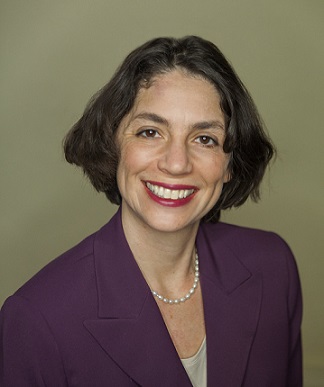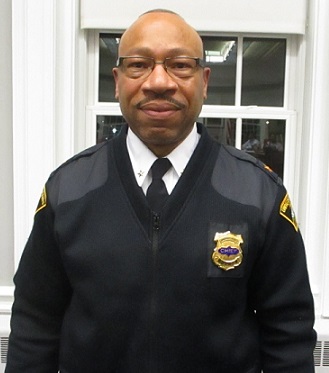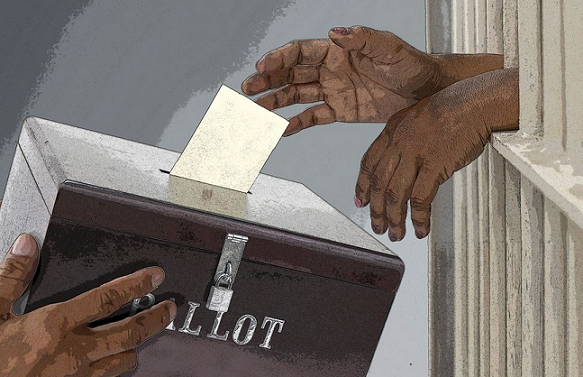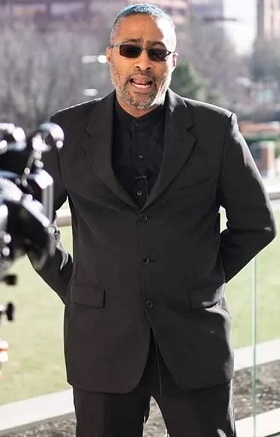Cleveland Voter Advocacy Groups get Access To Jails For First Time In Years, Push For Clear Policies!
FEATURED PHOTO: REVEREND RAY GREEENE EXECUTIVE DIRECTOR OF AKRON-BASED FREEDOM BLACK LED ORGANIZING COLLECTIVE (BLOC)

TheLandCle.org, By Collin Cunningham, Posted November 24th 2022
At the time of Ohio’s special primary election on Aug. 2, roughly 1,700 people were behind bars – either convicted or awaiting trial – at the Cuyahoga County Corrections Center, but only five of them cast ballots in that election. Now, armed with registration cards and absentee ballot forms, a voter advocacy group hopes to turn around recently low turnout rates. They gained approval in mid-September to canvass cell blocks and speak to inmates at Cleveland’s jail for the first time since 2018.
Northeast Ohio Voter Advocates (NOVA) wants to use the fall registration drive, which has stymied over the past three years by too few jail personnel and the Covid-19 pandemic, to inform incarcerated people of their voting rights and register as many new voters as possible by the Oct. 11 deadline for the Nov. 8 election. Advocates say that a lack of knowledge of voting rights, as well as restrictions on voting for incarcerated and formerly incarcerated people, may also increase recidivism, the rate at which people return to jail after their release.
Pandemic and staff limitations affected registration and voting
“In 2020, 115 people voted in jail in Cuyahoga County. In 2016 we talked to 594 and 358 voted,” said NOVA President Meredith Hellmer, highlighting the difference between a year with virtual outreach and one with in-person work. “Not allowing outside groups in and only doing video visits – that has decreased participation.
Hellmer holds that the best way to get prisoners interested in and registered for voting is to inform them that Ohio law only prevents an individual from voting while they are imprisoned on a felony charge. If they’re imprisoned for a non-felony, or if they’ve already served their sentence, they’re eligible to vote like any other citizen. Right now, there are a patchwork of state laws regarding prisoners’ and ex-prisoners’ right to vote; Ohio and many surrounding states prohibit felons from voting in prison but restore their rights after release.
Unfortunately, she said, health policies during the pandemic and the absence of guidance from sheriff’s department employees on in-jail voting have required NOVA volunteers to rely on virtual visitation. Not only does that decrease participation, but it also prevents advocacy workers from directly dropping off or picking up voting forms.

“We go in with a couple of volunteers, and we usually go at the end of September so we can do registration and ballot requests at the same time, and we talk to whoever is interested in talking to us,” Hellmer explained. Prior to NOVA’s arrival, jail employees are instructed by the organization to post notices on bulletin boards in each ward, meaning advocates have to rely on the good word of guards and other staff.
It wasn’t until mid-September that NOVA received the blessing of interim Cuyahoga County Sheriff Steven Hammett to enter the jail on Sept. 29 and 30, after which 75 inmates requested ballots and 69 inmates entered Cuyahoga County’s voter rolls.
Calls for voting rights education
The voting rights of incarcerated and formerly incarcerated people continue to be a source of confusion for many. Since exiting the jail system in 2001, Rev. Ray Greene, now executive director of the Akron-based Freedom Black Led Organizing Collective (BLOC), has worked to dispel one of the most pervasive myths: that felons are banned for life from voting in Ohio.
Of the roughly 1,700 people held prisoner in Cleveland’s jail, NOVA estimates that only a small portion are registered to vote at their current address. That comes despite many detainees being eligible to cast ballots under state law in Ohio. (The Cuyahoga County Sheriff’s Office did not respond to a request for data on how many of its prisoners are jailed on a felony charge.) Greene said that large swaths of jail residents and the guards and leaders who oversee them are, unfortunately, unaware of their voting privileges.
To NOVA president Hellmer, the problem of having uninformed incarcerated voters is twofold: not only, she says, is it likely to increase their recidivism rates, landing former prisoners back in jail, it also silences a significant portion of the population from deciding which officials have hands in their fates.
“Prosecutors, judges, your local city council person [are] the main people we need to be looking at, along with the mayor,” Greene explained. “These races can change our lives on a daily basis.”
A formerly incarcerated individual himself, Greene said he entered jail in the ‘90s with no knowledge of voting or the rights he retained while incarcerated. Part of the issue may stem from the lack of in-person education; NOVA and similar groups were not present during Greene’s jail time, so he educated himself.

Statistics suggest voter advocacy outreach in jails is successful: in addition to the 157 absentee ballot applications handed in by Cuyahoga County jail inmates in 2017, NOVA also submitted 380 voter registration cards and 129 vote-by-mail applications.
Just two years later, after county jail personnel informed Hellmer’s organization that it would be unable to allow volunteers inside due to staff shortages in 2019, those asks declined to 113 absentee applications, 97 registration cards, and 43 vote-by-mail request forms.
Advocating for policies on voter outreach in jails
Greene suggests that greater public understanding of voting rights would put pressure on elected officials to adopt policies supporting advocates having access to jails.
Statewide or local policies on voter advocacy access to jails could help ensure ease of access for NOVA and peer organizations that serve the seven counties highlighted in All Voting is Local’s (AVL) 2021 report, “Voter Policies Are Nonexistent in Ohio Jails.”
Nick Pressley, who directs AVL operations in Pennsylvania, says a statewide standard on jail voting could borrow from Pennsylvania’s Centre County, which implemented a new balloting policy in July. The policy requires that the Centre County Correctional Facility, among other things, inform prisoners of their voting rights, provide sign-up sheets for interested prisoners, coordinate with election offices to determine prisoners’ eligibility, and assist with completion of voter registration applications and ballots in a timely manner.

AVL Ohio State Director Kayla Griffin said an ideal policy would address inmates’ right to vote, lay out a timeline for the distribution of registration forms and absentee ballots, and also provide access to internet and print sources so inmates have ample time to learn who best deserves their vote.
Hiring more people at each detention center could help solve the staffing problem, said Collin Marozzi, a deputy policy director at ACLU of Ohio. AVL’s policy report recommends at least one social worker or corrections officer at each jail who is trained in the voting and registration processes.
Marozzi said revisions to bail prices and how judges set them could help dissolve some barriers and free up jail staff; Ohio’s ACLU office joined other advocate groups to advocate for Ohio House Bill 315. Introduced in May, the legislation would double the window for paying bail to 48 hours and give inmates 96 hours to meet conditions for a release hearing, extricating the roughly 12,000 state residents confined to jails while awaiting sentencing.
Block by block
While Marozzi and the ACLU continue to hack away at the larger systemic issues around incarceration, Hellmer helped usher four NOVA volunteers into the Cuyahoga County Corrections Center on the last two days of September. Working in pairs, the four volunteers registered 69 prisoners and helped 75 fill out 11-F forms, which are requests for absentee ballots prescribed for people who cannot vote in person because they are confined. She called the process “very smooth.”
Based on the sign-ups and registrations that resulted from NOVA’s September outreach and the easing of pandemic limitations, it may seem safe to assume that in-person education is here to stay, but Hellmer said that work can only continue as long as voting advocates and state agencies play their part.
Meanwhile, NOVA does what it can. As in years past, Hellmer said, NOVA volunteers were accompanied by four of the building’s 300-plus guards, with two guards assisting each pair of volunteers. Cell block by cell block, the organizers set out forms, collected personal information, and spoke with any inmates who wished to learn more, answering questions about disenfranchisement and explaining the importance of casting ballots.
To Greene, the in-jail visits are all about helping incarcerated individuals to understand their rights and the impacts of local elections so that inmates, upon leaving the system as he did in 2001, do not feel that voting is useless.
“Lack of education would be the reason [that someone doesn’t vote],” he pressed. “We need to create a different system.”








